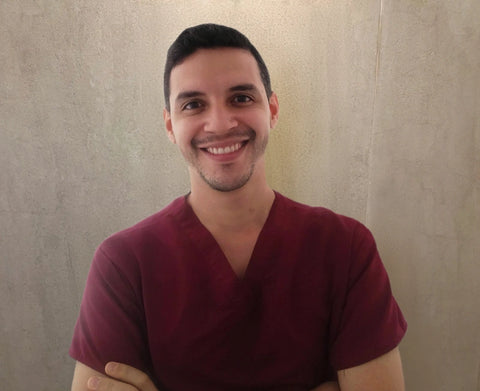Dental implantology often emphasizes bone quality, surface treatments, and surgical protocols. Yet, one of the most critical determinants of implant survival often goes unnoticed: occlusion. The forces of mastication, parafunction, and even subtle occlusal interferences can significantly impact the long-term stability of dental implants. Unlike natural teeth, implants lack a periodontal ligament, making them less adaptable to load and more vulnerable to biomechanical stress.
At GDT Implants, we recognize that optimal occlusal management is just as important as implant selection and placement. This blog explores the silent but powerful role occlusion plays in implant longevity and provides practical guidance for clinicians.
Understanding Occlusion in Implant Dentistry
Natural teeth respond to occlusal load through the periodontal ligament, which cushions forces and provides sensory feedback. Dental implants, in contrast, are ankylosed directly to bone via osseointegration, lacking shock absorption. This structural difference makes implants more sensitive to overloading, which can lead to:
- Microfractures in crestal bone
- Screw loosening or prosthetic failure
- Peri-implant bone loss
-
Catastrophic implant fracture
Clinical studies show that uncontrolled occlusal forces are a leading risk factor for late implant failure (Misch et al., 2005; Naert et al., 2001).

Key Occlusal Factors Affecting Implants
1. Parafunctional Habits
Bruxism and clenching can generate forces exceeding 800 N, far above normal masticatory loads. Patients with parafunction require protective strategies, including occlusal guards.
2. Implant Positioning and Angulation
Improper angulation or off-axis loading amplifies stress on peri-implant bone. Guided surgery protocols can help minimize the risk of implant misalignment, ensuring greater precision and predictability during placement.
3. Prosthetic Design
Crown-to-implant ratio, cantilever extensions, and occlusal table width all affect stress distribution. Narrow occlusal tables and reduced cusp inclines can reduce lateral loading.
4. Immediate vs. Delayed Loading
Immediate loading protocols can increase the risk of micromotion under occlusal forces. Success depends on achieving high primary stability, which is often supported by surface-enhanced designs such as GDT’s Conical Hex Implants with SLA treatment, engineered to promote rapid osseointegration and predictable outcomes when clinical conditions allow.
Clinical Strategies for Occlusal Management
- Establish mutually protected occlusion: Ensure anterior guidance reduces posterior implant loading during excursive movements.
- Minimize cantilevers: Keep prosthetic extensions as short as possible.
- Flatten cuspal inclines: Reduce lateral force vectors.
- Use protective appliances: Provide occlusal splints for bruxism patients.
-
Check occlusion regularly: Even after initial integration, changes in dentition or prosthetics may alter force distribution.
For full-arch or complex cases, digital workflows and CAD/CAM frameworks, such as those supported by GDT’s digital implant solutions, enable more precise occlusal adjustments.
Actionable Checklist for Occlusal Success
- Evaluate parafunctional habits pre-surgically
- Use CBCT and guided surgery for optimal implant angulation
- Design prosthetics with reduced cusp inclines and occlusal tables
- Confirm mutually protected occlusion at delivery
- Provide night guards for bruxism patients
-
Monitor occlusion at each maintenance visit
Final Takeaway
Occlusion is a silent but powerful determinant of implant longevity. By recognizing its impact and applying biomechanical principles to surgical and prosthetic planning, clinicians can dramatically reduce complications.
At GDT Implants, our precision implant designs and guided surgery solutions support clinicians in achieving optimal load distribution, ensuring implants not only integrate, but thrive for decades.
References
- Misch, C. E., et al. (2005). Occlusal considerations for implant-supported prostheses: Implant-protected occlusion. Practical Periodontics and Aesthetic Dentistry, 17(6), 469–475. https://www.researchgate.net/publication/282598284_Occlusal_Considerations_for_Implant-Supported_Prostheses_Implant-Protective_Occlusion_Implant-Protective_Occlusion
- Naert, I., et al. (2001). The influence of splinting and interproximal contacts on peri-implant bone loss in partially edentulous patients. Clinical Oral Implants Research, 12(4), 406–411. https://onlinelibrary.wiley.com/doi/10.1111/j.1600-051X.1995.tb00830.x
- Rangert, B., et al. (1995). Bending overload and implant fracture: A retrospective clinical analysis. International Journal of Oral & Maxillofacial Implants, 10(3), 326–334. https://europepmc.org/article/med/7615329
- Koyano, K., & Esaki, D. (2015). Occlusion on implants: Current clinical guidelines. Journal of Oral Rehabilitation, 42(7), 496–502. https://www.researchgate.net/publication/266563925_Occlusion_on_oral_implants_Current_clinical_guidelines





